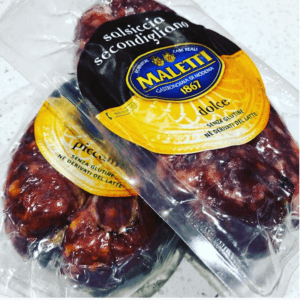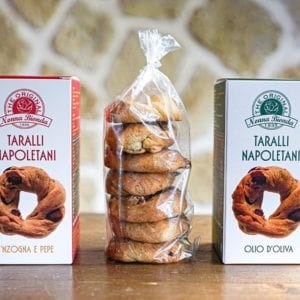The Baladin Epiphany
Hunter S Thompsons daily routine was a drug interlaced merry go round of glasses of Chivas regal, chartreuse, cigarettes, pornographic movies and fettuccine Alfredo. Yet, the man would condemn me for drinking what he supposed as “bad beer” The author and heavy drug user reputedly believed in a Celtic quote that claimed good people drank good beer, bad people drank bad beer. I have, on numerous occasions been accused of the latter, not directly by the now not surprisingly deceased author of Fear and Loathing in Las Vegas, but by most of the online world.
I grew up in a rough, northern working class town where “Real Ale” came from a tap depicting a hunts master sporting a monocle and raising a cheery pint. As I got older, a pint of Tetleys Smooth, only ever around Autumn and Winter, was seen as a sign of a considered beer drinker. Other than that we would habitually trip the light fantastic on everything from Carling, to Carlsberg Special. Corona was fancy, the kind of beer lads from the only public school in town would drink and your dad drank Becks or maybe Budweiser.
Its a bad habit that has definitely lingered into my thirties. I was living in London at the beginning of the microbrewery boom, but would still find myself regressing to my usual amber disciples; Fosters, Carling, Kronenbourg and when times were at there hardest, Skol. I know. I had to pacify myself and others, repeating a mantra passed on to me by Antonio Carluccio to combat the more prevalent wine snobs of the world “the wine you like to drink, is good wine” But rewording it to “beer” instead of “wine”
However recently, Ive decided that I should expand, enhance and encourage my taste in beers. Maybe drink less, but drink better, which led me to Baladin
Naturally when it comes to matters of taste I start at Italy. Previously Dreher and Ichnusa were about as advanced as I had got, however I needed something that didn’t come out of a generic Heineken tap and then relabelled for the sake of a long distant provenance.
Out of the artisan beers available, Baladin caught my eye first. Its name sounds like it could have been created by Tolkien, maybe another brother of Boromir or the great grandfather of Gimli? Apparently the word means Storyteller in ancient French, which as you drink the beers becomes apt as each one really has a different story. The bottle has enough attitude for me without ending up being like so many artisan beers, labels full of viking, snarling beasties, cradle of filth artwork. Drinking beer should be cool, but some of this real ale things are a bit Warhammer for my hand. Baladin branding is bold, confident, little bit of edge and each beer standing out quite unique which makes trying them all a bit more enticing. I like the size and shape too. 33cl is, if you cant be bothered with a pint, the perfect amount. The bottles curve also mean they may find themselves being shanghaied into olive oil and vinegar dispensing once their insides have been sucked clean.
I start with the Green Power ranger (All the Baladins have a different colour theme) called “Isaac” again, not particularly Italian sounding and when I get that first smack of coriander, not particularly Italian tasting but chilled down, very refreshing, a little sour tang (which I love in a beer) Its a White beer but isn’t as overly perfumed as some of the more commercial ones are. Its citrus and zesty, perfect for the baking heat outside. Like I said, at the end I keep getting coriander which really works for me. I move on to the blue labelled Wayan. It doesn’t touch the sides, straight down the hatch. I have another, guilty that I treated it like so many throw away lagers of my past but on the tongue it was clean, crisp, and fresh as dew soaked rosemary and thyme. The second isnt chilled and the flavour is more complex, still refreshing, flowery and a bit of pepper going on. I let my girlfriend try this, and for someone who is a Budweiser fan, she thinks its beautiful. Yellow Nora comes next, this one made with Kamut and is spicy, honeyed and a bit resin like. Personally I am probably taking this flavour profile more around Autumn Winter but my girlfriend likes it, saying its a bit Vin Jaune in its flavour, which I get.
We move on to the Birra Natzionale with its neck collared with the red, white and green of the Italian flag and faded into a cornflower Azzuri. This is probably closer to my usual taste in beer. Its immediately refreshing, a bit lighter than the others, but still herbaceous with a maltiness too it thats not super aggressive. Its also Italys first 100% home made beer, which adds a wonderful tang of holism to the beer. The final beer I have is the one which, aesthetically I like most, but eyeing up the percentage on the back, know will be the biggest challenge to my palate thats more accustomed to a 4.5% lager. The Rock’n Roll is a, in my opinion, whopping 7.5%, its an American Pale Ale, a style Ive seen in countless bars and pubs in the UK but never tried. First thoughts, this isnt one to neck. Its again, quite peppery, warm and grainy in taste. From a taste perspective its eclectic, sweet, strong a bit like a loaf of bread in its toasted, warm yeasty taste, but also in the way it fills you up suddenly. I think drinking this alone for someone like me, is difficult, however my gut feeling is it would be incredible with some gorgonzola or something fatty and spicy, like a pork belly vindaloo
I also got alongside this little coterie of brews, a bottle of Cedrata and something called “Ginger” Both soft drinks to counter a potential hangover I reasoned. I love Cedrata in Italy, its like a sophisticated/natural mountain dew. Its sweet and wonderfully sour with an electric yellow colour. Its not too sweet though, the Baladin version, which is ideal during this period of my life when I am sugar phobic. The “Ginger” turns out to be that familiar flavour of soda I remember from my childhood going back to Italy. There is no Ginger in this, its more bitter orange, a gentle herby sweetness, the kind of thing as a kid I would have found a little difficult, but as an adult who doesn’t like sweet pop, can totally get into. Would be great with some whisky
Im left, surprisingly a little bit torn now. I had imagined I would try the beers, enjoy them but kind of end up back to old habits, however I find myself re ordering. The Wayan and Isaac are perfect for the anticipated hot weather and will make a refreshing change for something that comes out of a silo close to the train lines in Burton Upon Trent. The Nora and Rock N’ Roll probably for Halloween, shorter days and that last weekend in November when we put the Christmas decorations and end up eating a kilo of stilton. I am by no means converted, but I feel a bit more enlightened and possibly in the eyes of Hunter s Thompson, maybe somewhere on the road to redemption.



 It started with Asterix launching a fist full of magic potion into the noble, patrician nose of Caesar. It was accentuated by Napoleon’s march over the alps and his conquest of the peninsular, before being topped off in 2006 when Zinedine Zidane anointed the chest of Materazzi with his gleaming tete in the world cup final. Almost a millennia of antagonism has existed between the French and Italians, and none more so than in the kitchen, on the pages of cookbooks and in popular food folklore but, the now humble, once royal Baba may be a seminal moment of culinary collaboration between the two tricoloured nations.
It started with Asterix launching a fist full of magic potion into the noble, patrician nose of Caesar. It was accentuated by Napoleon’s march over the alps and his conquest of the peninsular, before being topped off in 2006 when Zinedine Zidane anointed the chest of Materazzi with his gleaming tete in the world cup final. Almost a millennia of antagonism has existed between the French and Italians, and none more so than in the kitchen, on the pages of cookbooks and in popular food folklore but, the now humble, once royal Baba may be a seminal moment of culinary collaboration between the two tricoloured nations.